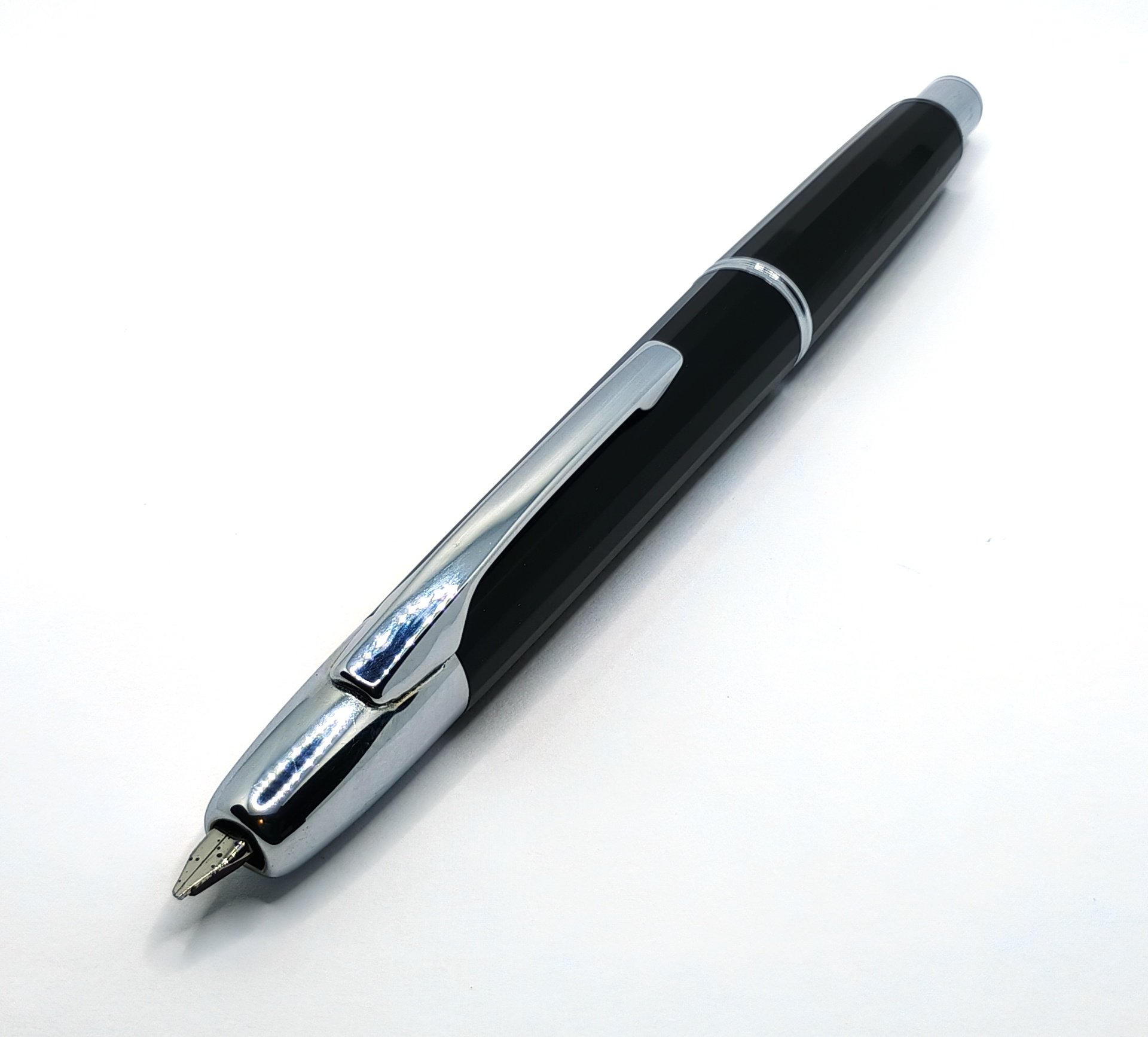Salutations, squawkers and waddlers. I haven't done one of these in a while.
The reason for that is, well, boring old pragmatism. I like fountain pens, and I have a handful of them, but due to the majority of my work being digital by nature one way or the other I don't write a whole heck of a lot down on a daily basis anymore. I do a little, and because of it having a pen around is still essential. Obviously I prefer to use a fountain pen. But I don't write enough when all is said and done to justify having more than one fountain pen inked up at a time. I know how some of you do, but an ink fill for me can easily last a couple of months. If I kept multiple pens inked up I'd never get anything done in between all the time I'd spend unclogging and cleaning them out.
Therefore my pen rotation schedule is pretty slow. Lately I've been using this:

This is a Majohn A2 Press, and yes, it's that pen. You know the one.
The A2 is, let's call it... inspired by the Pilot Vanishing point to a significant degree. So much so that parts between the two are actually interchangeable.
The A2's a damn sight cheaper, though, and has several construction differences starting with a plastic body (in this variant, anyway; they make a metal one now) with a faceted look. The facets do in my opinion give it a very subtle Art Deco/1920's sort of vibe but it's understated, not totally in your face like so many things are these days that are trying hard to evoke whatever bygone era.
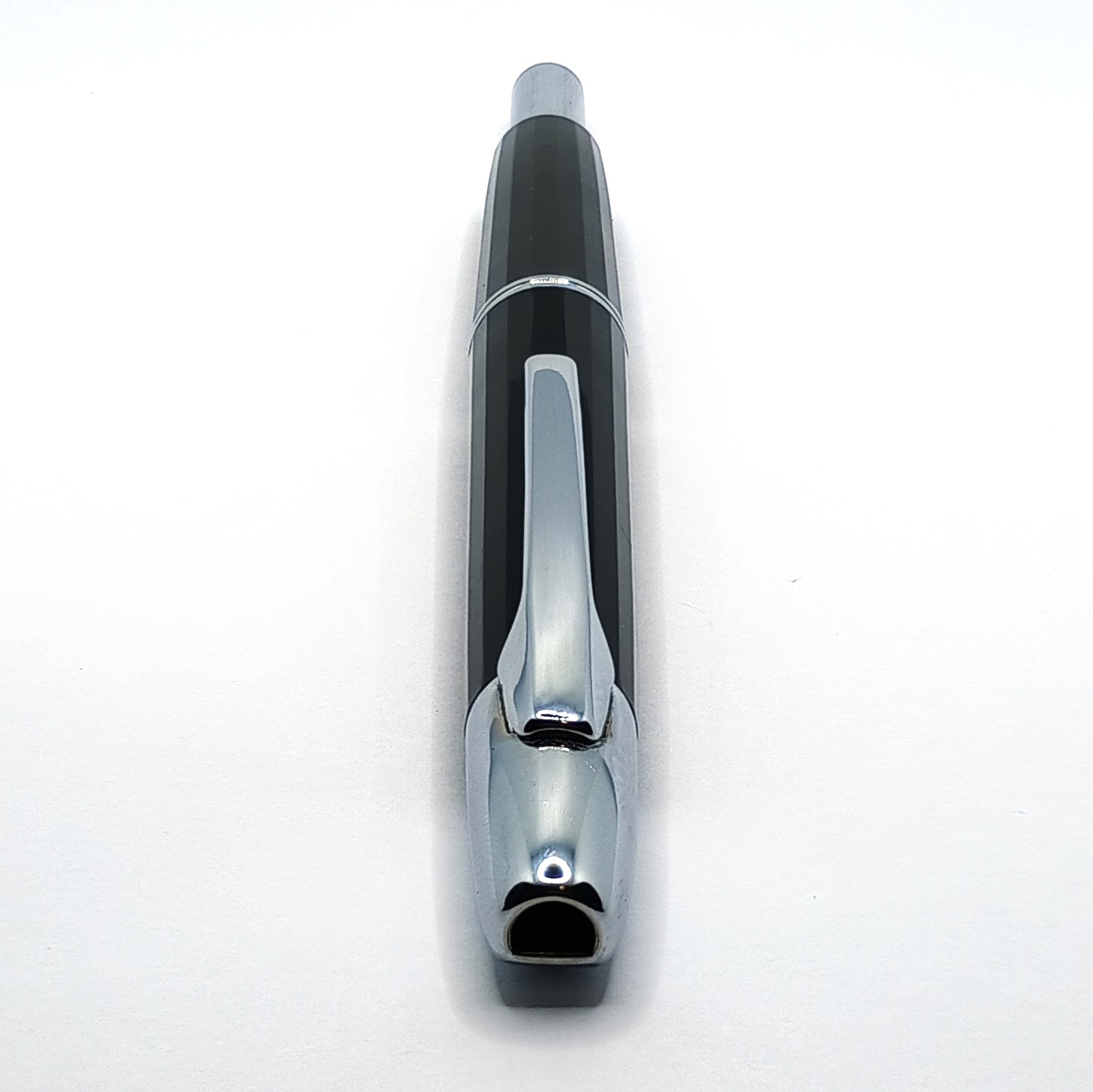
The A2 is, of course, retractable. No cap. You press the long plunger on the end like a regular ballpoint clicker pen and the point retracts into the body, with a little trap door closing behind it to keep it from drying out. Because of this the A2 is just as long "posted" as it is put away, minus the length of the point itself. That's about 5-1/2" in total when retracted. You can neither make it any shorter nor any longer.
The A2 is a fairly fat pen by the standards of my preference, but it's not as fat as any of the turned wood or trendy brass models I seem to see on display these days. The thickest point is at the silver band in the midsection where it unscrews, and it measures 12.33mm or 0.485" at that point. So strangely enough, that means it is a few thou thinner than an OG Vanishing Point, which is: 13.38mm or 0.526". It's slight, but enough to be noticeable.
I prefer a slim pen, and preferably one with a straight body, and the A2 is neither. The whole thing is tapered down at both ends like a very emaciated football. This carries on all the way down to where you grip it to write, which I found a trifle disconcerting at first (and the Vanishing Point is exactly the same way). You get used to it. Right along with getting used to the pocket clip being on the "wrong" end of the pen, up by the point rather than at the tail, and totally immobile. This is presumably a hedge against leakage since the pen'll always be pocketed with the tip up in this configuration.

The elephant in the room? What elephant? Oh, yeah. That elephant.
Apropos of nothing, you can get an entire replacement mechanical assembly for the A2 for about $19 online. The point and nib assembly, metal cap for behind the cartridge, a little cleaner bulb, a spare converter, the works. This enables the possibility of committing violence to your A2's nib that you would never in a million years consider inflicting on your Vanishing Point, and clicking undo on that if you fuck it up will cost you less than a single Jackson.
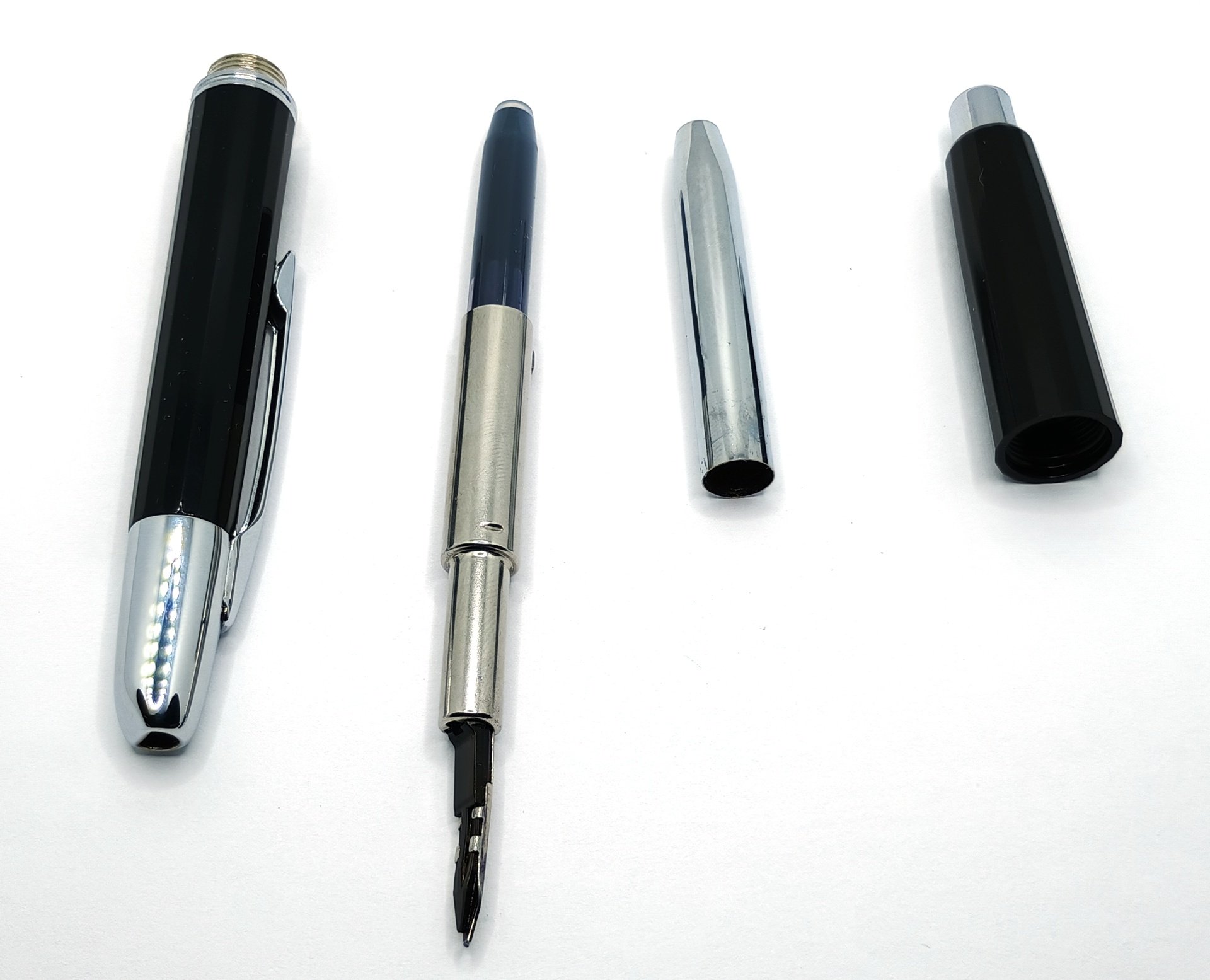
The problem, you see, is that the Majohn is one of those newfangled Asian pens whose maker assumes the sum total of your desire in life is to have the thinnest and sharpest needle point on your fountain pen in the history of the universe, and to hell with all other considerations. The A2 comes in "fine," which is extraordinarily fine, and "extra fine," which is so sharp as to be practically useless. At least by my standards. I understand this sort of thing is very popular in hemispheres where people write tiny in pictoglyphs and need to cram them into little boxes on forms, or something. But that's not what I do. I prefer an italic or, even better, an oblique nib. There's no sense in being anachronistic if when you hand someone a written page they can't immediately tell. Where's the fun in that?
So I took a whetsone and I hacked a spare A2 nib assembly into the widest oblique point I could manage before I started to destroy the plastic feed and nib support. The net result is 1.3mm and, well, I prefer even a little wider. But it'll do.
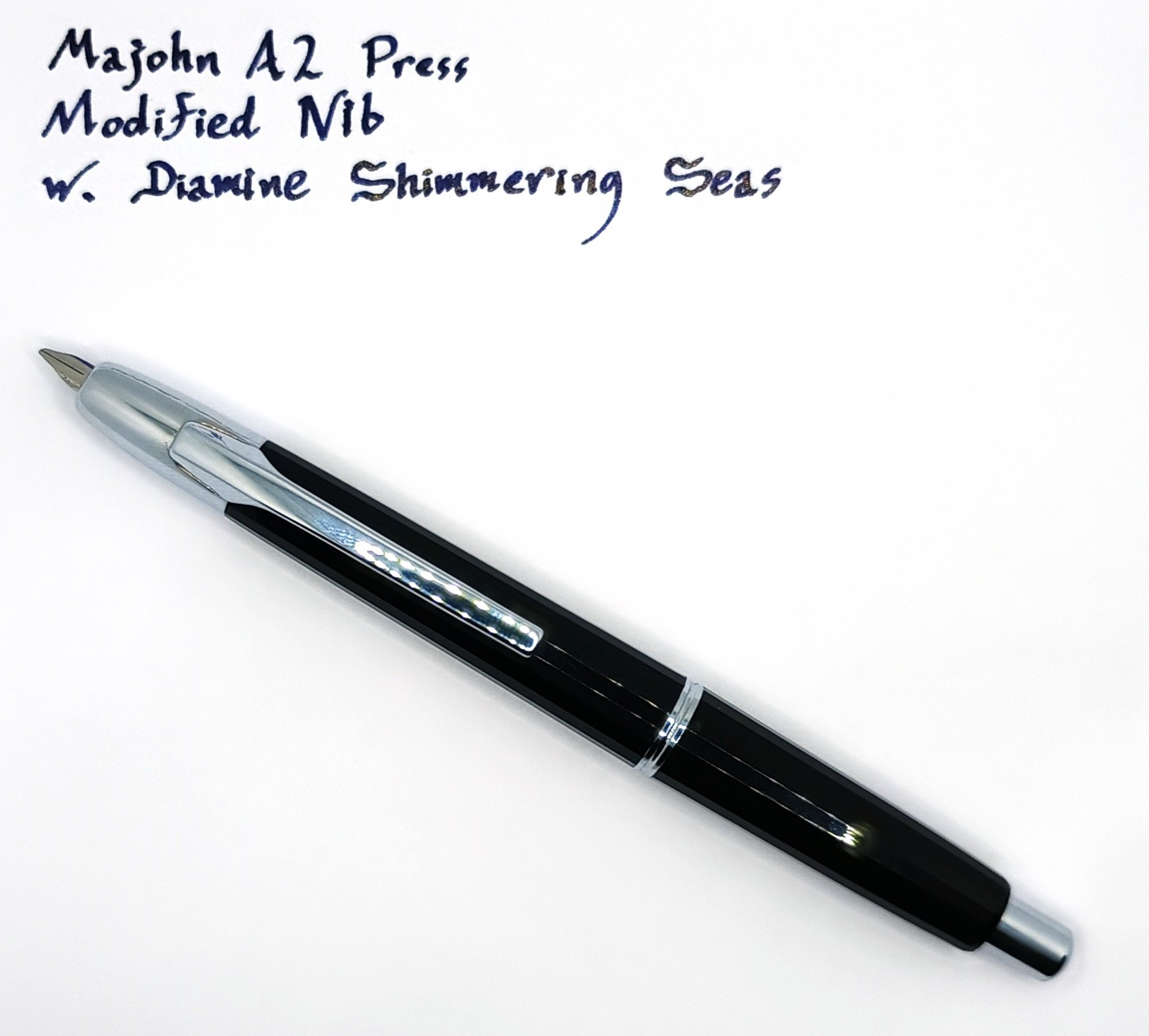
Mine is therefore probably the only A2 Press in the world that'll put down this.
My A2 is now a pretty wet writer (evidenced by the feathering on the cheap copy paper I just doodled that on) but kicks out a line approximately a zillion times bolder than it did when it was stock. The stainless steel nib the A2 comes with is pretty thick vertically at the root, which I had to cut into to accomplish this. So there isn't a ton of line width variation between horizontal and vertical strokes, but there is some and I'll take what I can get.
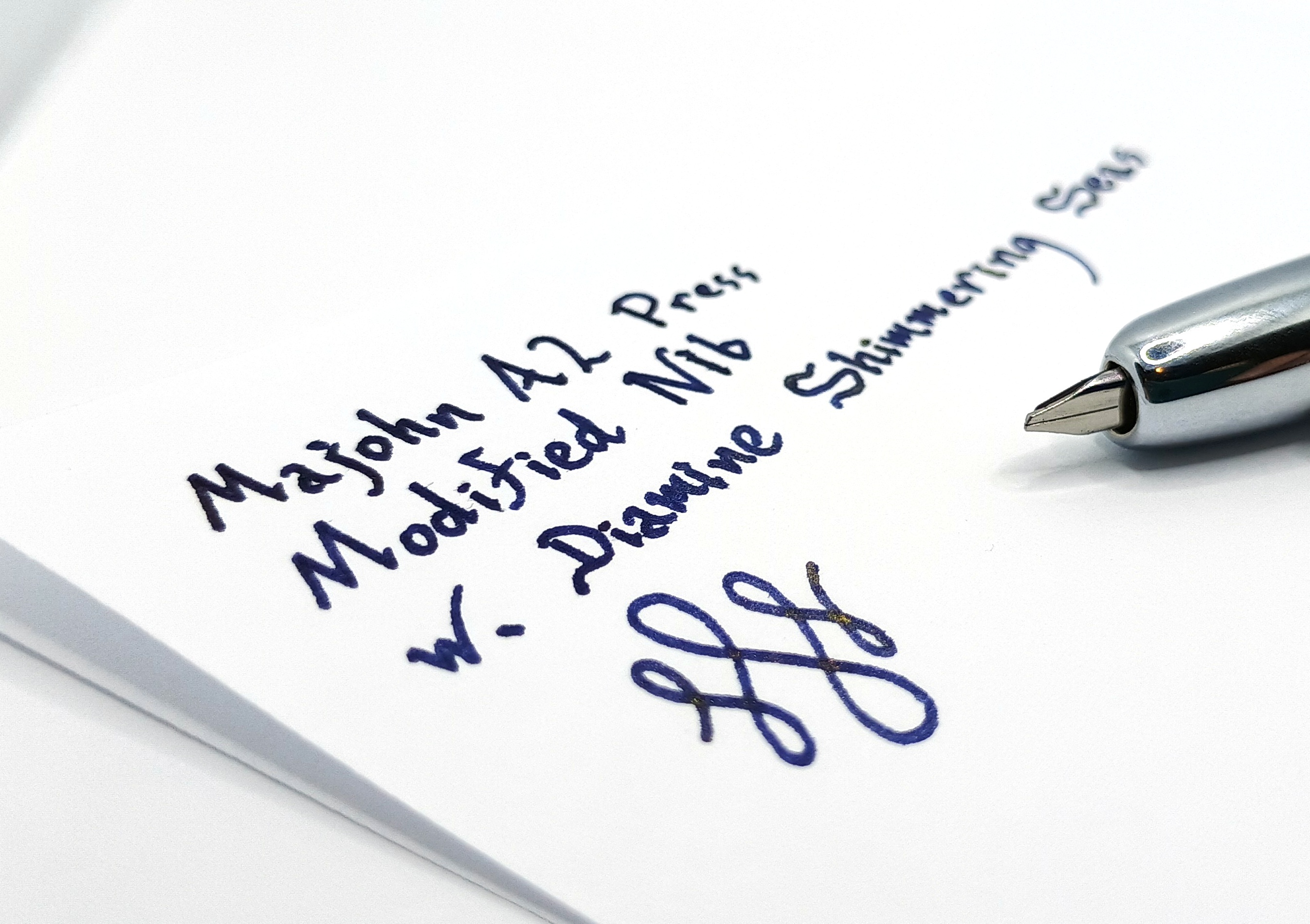
I currently have it loaded with some Diamine Shimmering Seas, which is one of their "shimmer" inks that's supposed to present a metallic sheen. It works best in a broad pointed pen, so it does pretty okay out of this one. The effect is pretty tough to photograph.
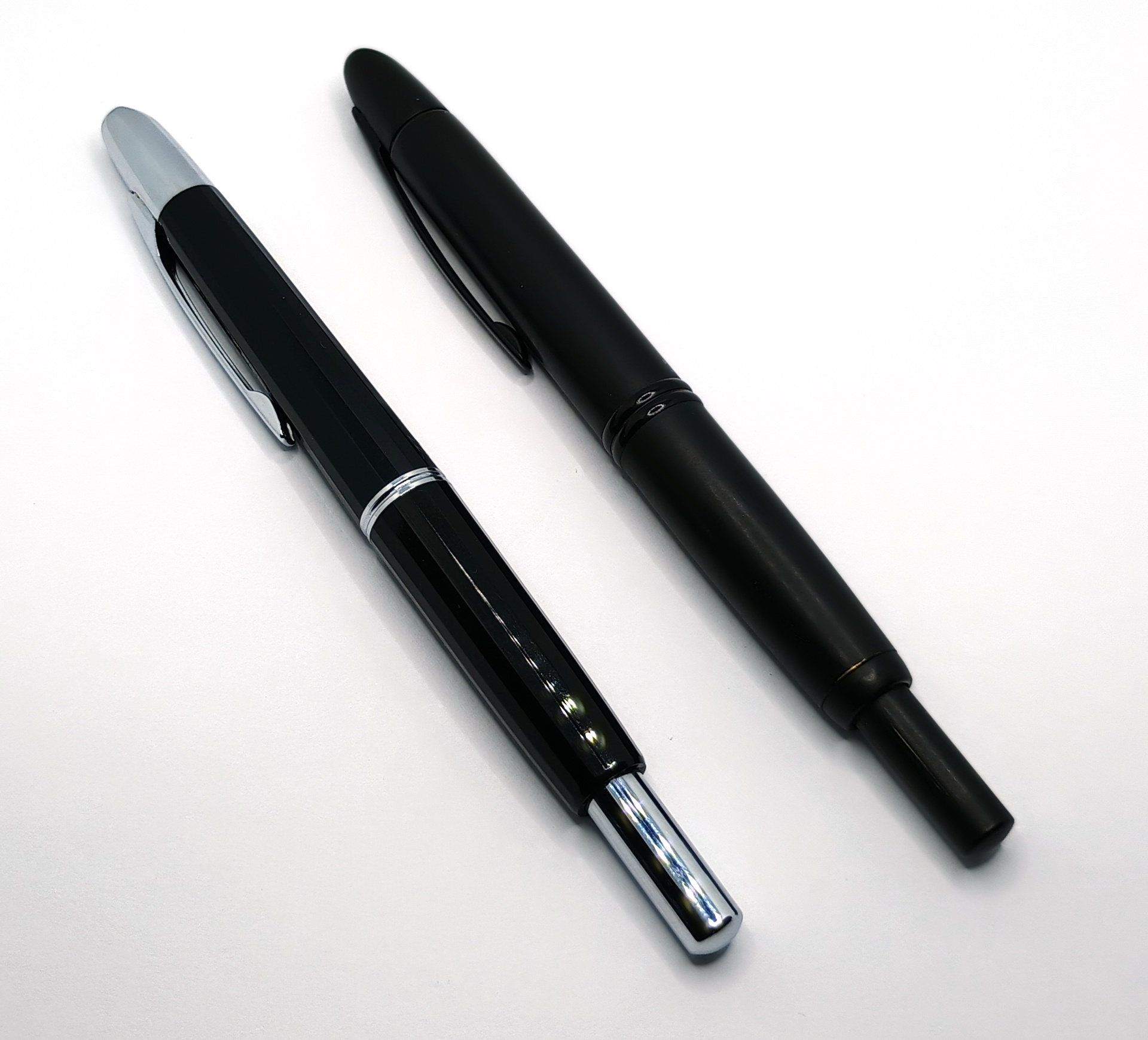
The above comparison is inescapable every time the topic comes up. Yes, I do own a genuine Pilot Vanishing Point and no, I generally don't leave the house with it. The Pilot has a lacquered brass body and is significantly heavier than the Majohn, has a nice soft and refined click, and generally feels more premium overall. As you'd bloody well expect it to, for what it costs. It's a very fine pen (both in terms of construction and line width) and while Pilot does make a "stub" nib for it, the widest and only size you can get is a poxy 1.0mm, and a replacement unit is north of $100. That is, just for the nib assembly.
So for daily use I'll stick to my hacked up clone, thanks.
